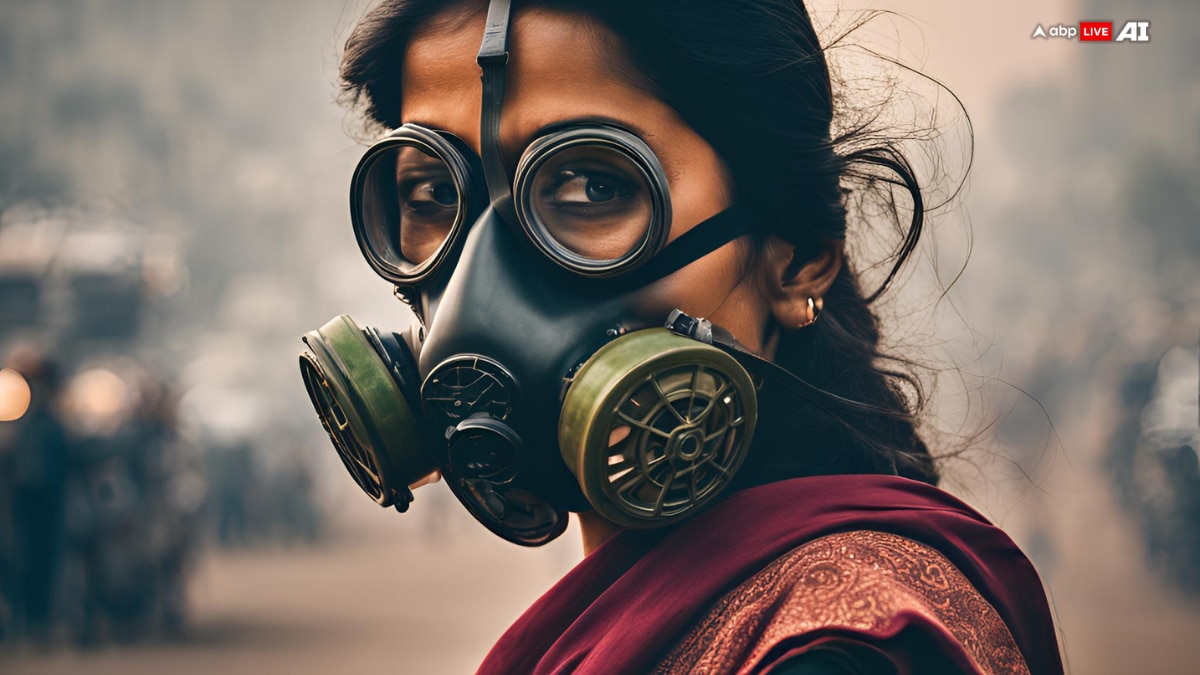Delhi-National Capital Region on Wednesday woke up to a thick blanket of smog shrouding it. Despite having the second-cleanest post-Diwali air since 2015, Delhi's air quality continued to be 'hazardous' with the AQI in the 'poor category' category. At 7 AM on Wednesday, November 6, the AQI in Delhi was 358. In contrast, the air quality in the country's financial capital was much cleaner with the AQI at 141, categorised as 'moderate'.
An AQI reading between 0 and 50 is considered 'good', 51 to 100 is considered 'satisfactory', 101 to 200 is considered 'moderate', 201 to 300 is considered 'poor', 301 to 400 is considered 'very poor' and 401 to 500 is considered 'severe'.
AQI In Delhi
The air quality in Delhi reached alarming levels in certain areas, such as Wazirpur, Mundka, Dwarka, and Bawana, with the breaching the 400 mark. Check out the table below to know the AQI (as per the Air Quality Early Warning and Decision Support System For Delhi at 7 AM) in your area:
| AQI Monitoring Station | AQI |
| Major Dhyan Chand Stadium | 358 |
| Mundka | 419 |
| NSIT Dwarka | 447 |
| Narela | 377 |
| Nehru Nagar | 378 |
| New Moti Bagh | 381 |
| Delhi University North Campus | 373 |
| Patparganj | 381 |
| Punjabi Bagh | 388 |
| Pusa | 330 |
| RK Puram | 373 |
| Shadipur | 372 |
| Sirifort | 341 |
| Sonia Vihar | 381 |
| Vivek Vihar | 382 |
| Wazirpur | 421 |
| Anand Vihar | 372 |
| Ashok Vihar | 398 |
| Bawana | 412 |
| DTU | 355 |
| IGI Airport | 347 |
| Dilshad Garden | 270 |
| Burari Crossing | 370 |
| ITO | 327 |
| Jahangirpuri | 398 |
| Jawaharlal Nehru Stadium | 315 |
| Lodhi Road | 309 |
| Mandir Marg | 356 |
| Najafgarh | 354 |
AQI In Mumbai
The Mumbai air was relatively cleaner with residents in certain areas experiencing the cleanest air. Several localities such as BMC in Shastri Nagar, Abhinav Nagar Borivali (E), Sector 19(A) in Nerul among others recorded an AQI of zero at 7 AM. Check out the table below to know the AQI in your area.
| AQI Monitoring Station | AQI |
| Colaba | 117 |
| Kandivali East | 111 |
| Vile Parle West | 117 |
| Sanpada, Navi Mumbai | 197 |
| Vasai West | 148 |
| Tondare, Taloja | 112 |
| Chembur | 122 |
| Mindspace Malad West | 90 |
| Worli | 169 |
| Kurla | 106 |
| CBD Belapur | 123 |
| Gokul Nagar, Bhiwandi | 176 |
| Mahape, Navi Mumbai | 161 |
| Bandra East | 306 |
| Colaba | 139 |
| Fire Station, Malad (W) | 191 |
| Bandra Kurla Complex | 223 |
| Borivali East | 85 |
| Kherwadi Bandra East | 206 |
| Nerul Navi Mumbai | 141 |
| Mulund West | 124 |
| Sewri | 230 |
The World Health Organization says that exposure to PM 2.5 over 24 hours must not be more than 15 micrograms per cubic metre. However, many areas in Delhi record AQI 30 times more than the acceptable level. According to WHO, air pollution resulted in around 4.2 million premature deaths globally in 2019. The WHO says, "In 2019, some 68% of outdoor air pollution-related premature deaths were due to ischaemic heart disease and stroke, 14% were due to chronic obstructive pulmonary disease, 14% were due to acute lower respiratory infections, and 4% of deaths were due to lung cancers."


